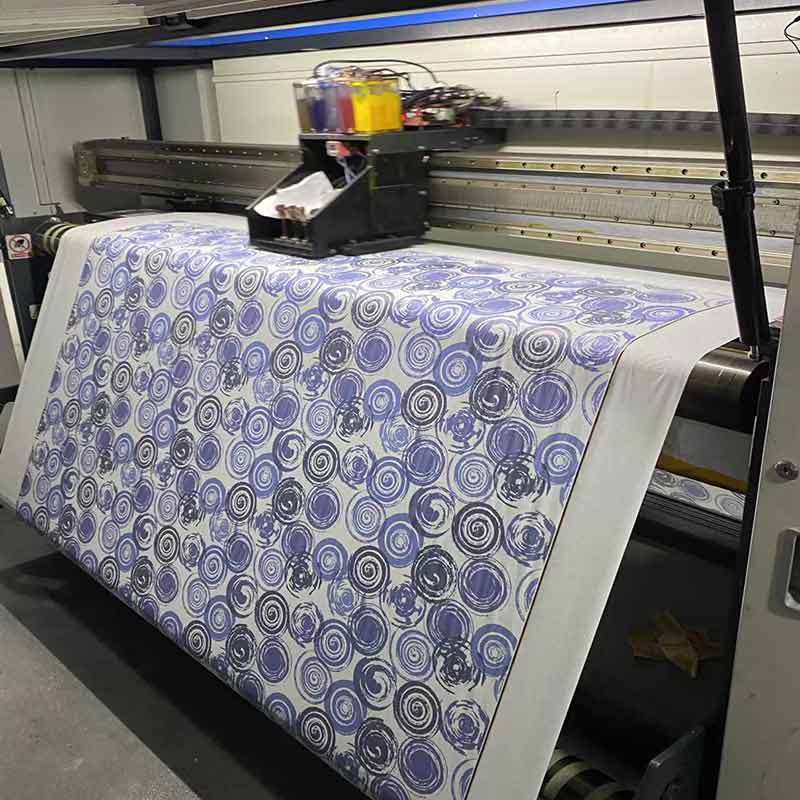What Is Heat Transfer Printing?
In the field of modern fashion and industrial manufacturing, heat transfer printing is redefining the boundaries of personalization and efficient production with its unique advantages. As a technology that combines digital printing with traditional heat transfer processes, Heat Transfer Printing not only meets consumers' demand for personalized products, but also provides brands and manufacturers with flexible and efficient production solutions. This article will explore the principles and applications of this technology in depth.
What is Heat Transfer Printing?
Heat Transfer Printing is a process that transfers a pattern from a carrier (such as film or paper) to a target material (such as fabric, plastic or metal) through heat energy. Its core is to use heat pressing equipment to transfer a pre-printed pattern to a target surface through high temperature and pressure. Compared with traditional printing technology, Heat Transfer Printing has higher flexibility and adaptability, especially for small batch and personalized production.
Among the many heat transfer technologies, Dtf (Direct to Film) technology has attracted much attention in recent years. Dtf technology is to digitally print directly on a film and then transfer the pattern to the surface of a fabric or other material. The advantage of this technology is its high degree of restoration of complex patterns and fine details, while supporting the printing of a variety of materials, including cotton, polyester, leather, etc.

Technical principles and process flow
The process flow of DTF technology mainly includes the following steps:
Film preparation: Select a suitable PET film as a carrier to ensure its flatness and heat resistance.
Digital printing: Use special thermal transfer ink to print the pattern on the film. These inks will react chemically with the target material at high temperatures to achieve a firm adhesion of the pattern.
Thermal transfer: Place the printed film on the surface of the target material, and apply high temperature and pressure through the hot pressing equipment to transfer the pattern from the film to the surface of the material.
Post-processing: Remove the film, clean and organize the finished product to ensure the clarity and adhesion of the pattern.
The key to this process is the selection of thermal transfer ink and hot pressing equipment. High-quality ink can ensure the color vividness and durability of the pattern, while precise hot pressing parameters (such as temperature, pressure and time) directly affect the transfer effect of the pattern.
Advantages of Dtf technology
Excellent color performance: Dtf technology can achieve a resolution of up to 1200dpi and supports full-color printing, which is especially suitable for the presentation of complex patterns and gradient effects.
Wide range of applications: Whether it is cotton, polyester, leather or plastic, Dtf technology can provide excellent adhesion and durability.
High environmental protection: Compared with traditional printing, Dtf technology reduces the use of water resources and chemicals, which meets the requirements of sustainable development.
High production efficiency: The flexibility of digital printing makes Dtf technology particularly suitable for small-batch and multi-variety production modes, and can respond quickly to market demand.
Application scenarios and market prospects
The application scenarios of Dtf technology are very wide, covering multiple fields such as clothing, footwear, luggage, and household goods. For example, personalized T-shirts, customized uppers, leather wallets and other products can be efficiently produced through Dtf technology.
With the increasing demand of consumers for personalized products, the market prospects of Dtf technology are very broad. According to market research institutions, the global heat transfer market is expected to grow at an average annual rate of 8% in the next five years, especially in the clothing and footwear industries, and the application of Dtf technology will further promote this trend.
Future development trends
Intelligence and automation: With the advancement of Industry 4.0, Dtf technology will be combined with automated production lines to further improve production efficiency and quality.
Research and development of environmentally friendly materials: In the future, more environmentally friendly heat transfer inks and film materials will be developed to meet increasingly stringent environmental regulations.
Popularization of personalized customization: Dtf technology will promote the popularity of personalized customization from the high-end market to the mass market, creating more value for brands.
Summary
Heat Transfer Printing, especially Dtf technology, is changing the landscape of traditional manufacturing with its practicality and innovation. It not only provides brands with efficient production solutions, but also brings more personalized choices to consumers. With the continuous advancement of technology and the growth of market demand, Dtf technology will surely play a greater role in the future and become a bridge connecting creativity and manufacturing.




